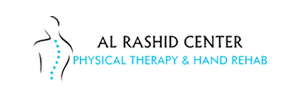HIPAA, the Health Insurance Portability and Accountability Act, sets the standard for protecting sensitive patient data. Any company that deals with protected health information (PHI) must ensure that all the required physical, network, and process security measures are in place and followed. This includes covered entities (CE), anyone who provides treatment, payment and operations in healthcare, and business associates (BA), anyone with access to patient information and provides support in treatment, payment or operations. Subcontractors, or business associates of business associates, must also be in compliance. What is HIPAA? The Health Insurance Portability and Accountability Act of 1996 (HIPAA) is legislation enacted by the federal government to:
- Ensure health insurance portability
- Reduce health care fraud and abuse
- Guarantee the integrity and confidentiality of health information
- improve the operations of health care systems
Most of the changes, security measures, and system requirements in the Industry are correlated with HIPAA, directly or indirectly. HIPAA focuses on ensuring three important aspects of Protected Health Information (PHI): Confidentiality – Patient’s PHI is highly secured and immune to cyber-attacks and should not be disclosed without patient’s authorization to any of the unauthorized entity. We do in-store and in-transit encryption of the data in our system’s databases. Integrity – This is to ensure that the PHI remains in the intact form, without any alterations or modifications Availability – This is to ensure that patients can have an easy availability and all time accessibility to their PHI, including medical records, lab results, DICOMs, and other related information Understanding of HIPAA guideline and implementing them in our systems is what made us SUCCESSFUL in the Industry. HITE provides a thorough risk assessment and management plans by doing an exhaustive research of the risks, their impact, and likelihood. We do an in-depth analysis of systems and ensure all the desired safeguards – Administrative Safeguards, Physical Safeguards, and Technical Safeguards.











